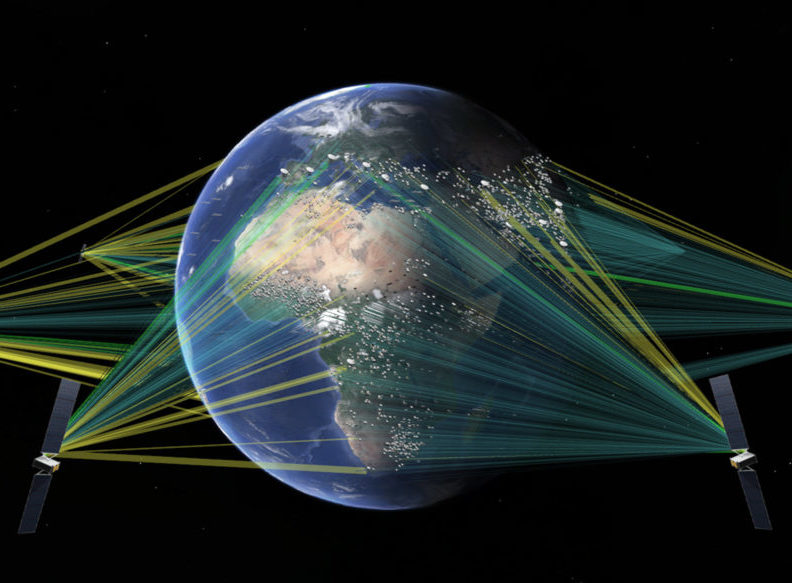Last week, I had the opportunity to attend the Schriever War Games in Rhode Island. This annual event, is a multi-month (almost year-long) series that serves to ensure the military is prepared for the potential adversarial conflicts and scenarios that will mitigate the future threats posed to national security interests.
As part of the Schriever War Games, the military identifies a scenario that they envision facing a decade in the future. The participants from the military and private industry then build toolkits of solutions and capabilities that they can use in those scenarios. From there, Red Team / Blue Team exercises begin, and teams attempt to outmaneuver each other in a hypothetical conflict. The toolkits can only include solutions that are currently available or are slated to be available in the next decade.
What’s particularly exciting about the War Games is the involvement of commercial and industry partners. The military understands that much of its future capabilities will be developed by those that it partners with in the private sector. By getting them involved in the War Games, industry partners become aware of the military’s future challenges and requirements, and the military gets to learn about the new capabilities and solutions that its industry partners are developing.
And one of the areas where there will be massive innovation and introduction of new solutions in the coming years is the satellite industry. Whether it’s the launch of new satellite constellations at new orbits, or the introduction of satellite services in some of the more remote and extreme locations on the planet, the satellite industry is making massive strides and will have many new services and capabilities that the military will be able to take advantage of in ten year’s time.
Let’s take a look at three of the game changing future commercial satellite capabilities that were discussed at the recent Schriever War Games:
O3b mPOWER and high throughput satellites at MEO
One of the largest and most exciting innovations that the military can look forward to in the coming years is the introduction of O3b mPOWER – a next generation, high throughput satellite service in Medium Earth Orbit (MEO). This extremely high bandwidth, exceptionally low-latency satellite service will deliver incredible amounts of data to virtually anywhere on the planet and will do so with increased resiliency.
With space now considered a warfighting domain, mPOWER’s baked-in anti-jam and resiliency features ensure that military communications are harder to degrade, deny or compromise. Its smaller, more powerful beams and closer proximity to Earth will make it possible to enjoy fiber-like throughputs. The MEO satellites have already garnered the interest and attention of the military with the launch quickly approaching in 2021.
GovSat-1 and the rise of “commercial military satellites”
The Department of Defense (DoD) prefers the security and reliability of the X-band and military Ka-band satellite spectrums over the commercial C-band or Ku-band satellite spectrums. But, as Phil Harlow recently wrote on the Government Satellite Report, “There are less than a dozen WGS satellites, making the bandwidth on those satellites a precious and limited commodity.”
Being able to roll onto a commercial satellite when the WGS satellite constellation is denied, in use, or simply doesn’t have enough bandwidth could be a major asset for increasing the resiliency of military satellite communications. This is where GovSat-1 comes in.
GovSat-1 is a satellite that was built by commercial partners in collaboration with coalition partner nations to offer the same spectrum, security, and capabilities as a military satellite. However, it’s a commercial satellite that can be contracted for when and where it’s needed. Using the GovSat-1 satellite doesn’t necessarily require additional hardware or different terminals to utilize since it effectively utilizes the same technology as a WGS satellite.
Since GovSat-1 just launched in January 2018, the lifespan of this fresh satellite is expected to last from today through the entirety of the wargame scenarios, and beyond.
Increased polar capacity to meet higher demand
The DoD is in a transformative period where they’re shifting focus back to near-peer adversaries – including Russia and China – and working to revitalize a military depleted from two decades of near-constant war.
Considering the geographic location and sophistication of these adversaries, there’s a renewed interest in securing the poles and ensuring that today’s advanced network-enabled platforms and capabilities are available to the warfighter in these extreme and harsh environments.
Traditionally, the poles have been primarily used by research and commercial maritime organizations, but the military is increasing requirements for satellite service in these areas as well. Commercial satellite solution providers are looking to make strategic investments to meet that demand.
In the coming decade, the military can anticipate an increase in the number of satellites that service the Arctic with high SLAs. They can also anticipate satellite services from lower orbits starting to service these locations in the not-too-distant future.
As next generation satellites – including the satellites at lower orbits – reach the end of their life over the next decade, they will see their course-correction reduced to help extend their service. Some of the satellites at MEO will invariably be among them, and their new orbit will enable them to deliver service to the poles. This means that the government will not only be able to get satellite connectivity in this extreme location, they will also be able to get high throughput, low-latency connectivity there as well.
For additional information on GovSat-1 click HERE. for additional information on mPOWER, click HERE.
